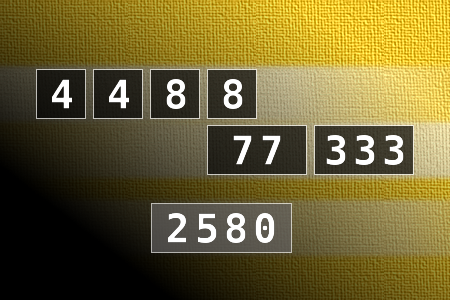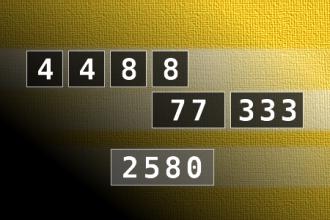Calculate the number 2580
NUMBERMANIA: Calculate the number 2580 using numbers [4, 4, 8, 8, 77, 333] and basic arithmetic operations (+, -, *, /). Each of the numbers can be used only once.Correct answers: 12
The first user who solved this task is Nasrin 24 T.
#brainteasers #math #numbermania


